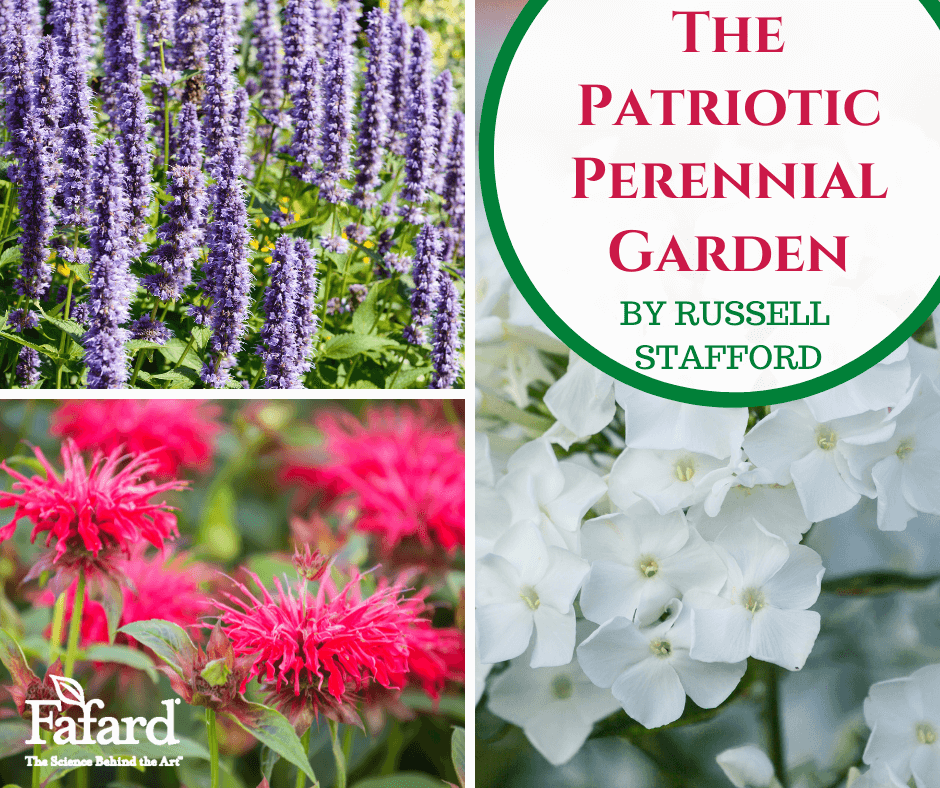
What could be more American than a planting of native perennials that flowers red-white-and-blue in summer? If you have a sunny to lightly shaded garden spot with reasonably decent soil, you could celebrate next Independence Day with your own floral fireworks, courtesy of the following perennials. All are native to eastern North America, and hardy to USDA Zone 5. If your soil is excessively sandy or heavy, be sure to dig in a couple inches of Fafard® Premium Natural & Organic Compost before installing your patriotic planting.
Red Garden Flowers
Bee balm (Monarda didyma hybrids)
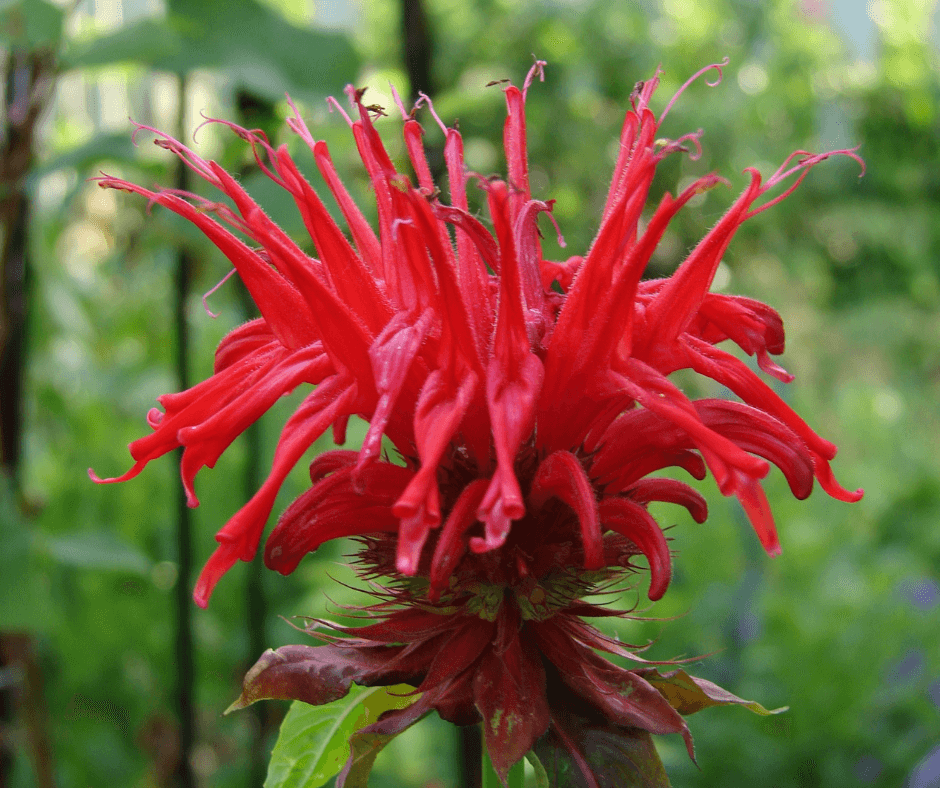
Few plants are more all-American than the species and hybrids in the genus Monarda, which is endemic to the New World. The frilly, fragrant flower heads of these tall, often vigorously spreading perennials expand in late spring and early summer, drawing in whatever hummingbirds are in the vicinity. Powdery mildew can be a problem in humid, droughty weather, so look for varieties that have been selected for mildew resistance. These include cultivars in shades of brilliant red (‘Gardenview Scarlet’, ‘Jacob Cline’), rich purple-red (‘Judith’s Fancy Fuchsia’, ‘Raspberry Wine’), violet-purple (‘Purple Rooster’, ‘On Parade’), lavender-purple (Monarda fistulosa ‘Claire Grace’, ‘Dark Ponticum’), and hot pink (‘Coral Reef’). All of the above are in the 3- to 4-foot-tall range. Several recently introduced, lower-growing bee balms are also available, including purple ‘Grand Marshall’ (2 feet tall) and bright pink ‘Grand Parade’ (15 inches).
Winecups (Callirhoe involucrata)
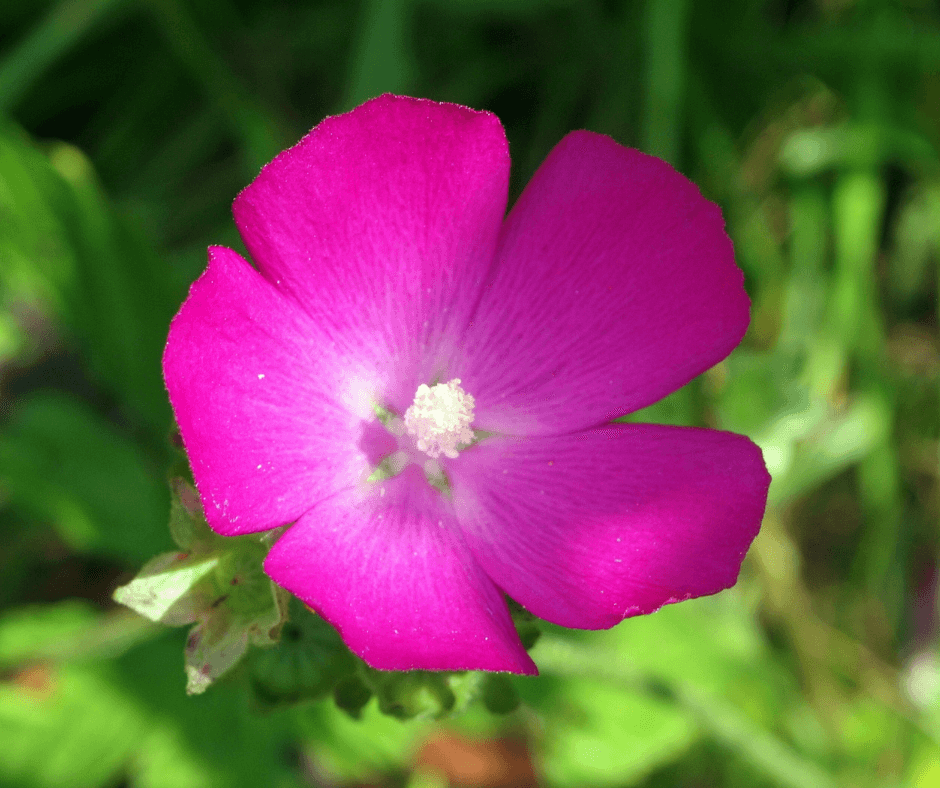
Another purely North American genus, Callirhoe encompasses 9 species of sun-loving perennials and annuals, most blessed with showy burgundy-red flowers that continue through much of summer. The trailing habit of Callirhoe involucrata is typical of most winecups. If you’re looking for a sun- and heat-loving perennial that will cover ground, cascade down walls, or weave through neighboring plants, you can hardly do better. Fringed poppy mallow (Callirhoe digitata) is more upstanding in habit, to 2 feet tall; it’s also well worth growing.
White Garden Flowers
American ipecac (Gillenia stipulata)
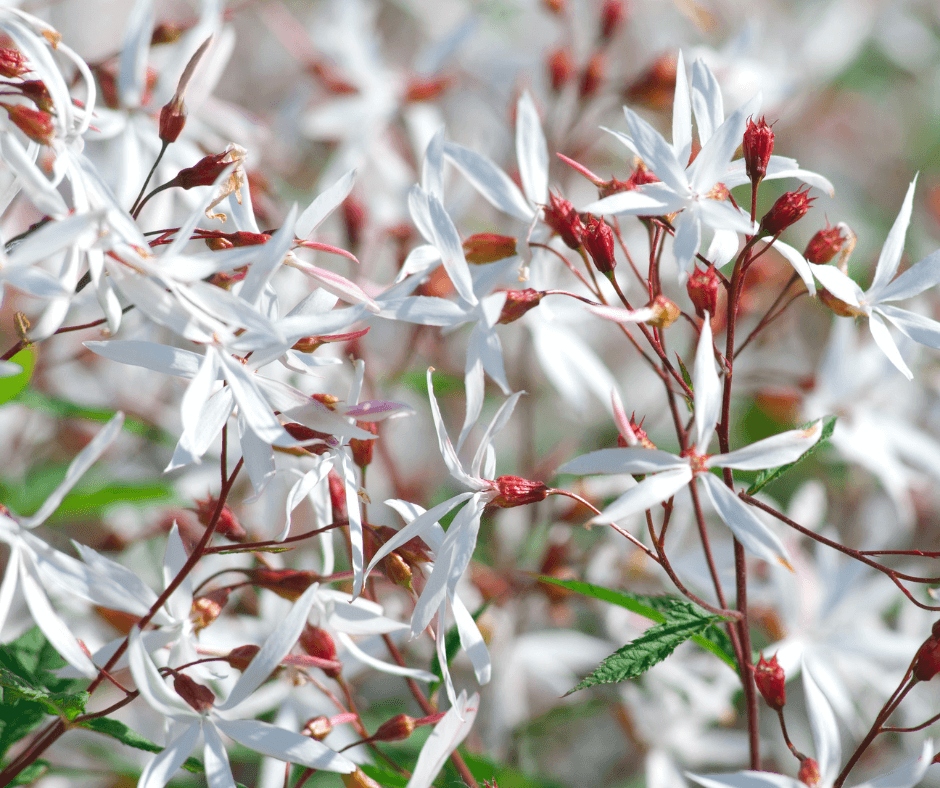
A long-lived, 3-foot-tall perennial with lacy leaves, starry early summer flowers, brilliant fall color, and a tough, drought-tolerant constitution, the eastern North American native American ipecac (and its close cousin, Gillenia trifoliata) is one of the best garden perennials, period. It takes a couple years to get going, which makes it a hard sell in an era when many gardeners and nurseries want instant results. But if you get a chance to buy one (or more), grab it. You’ll thank yourself for years to come.
Other White-Flowered Native Perennials
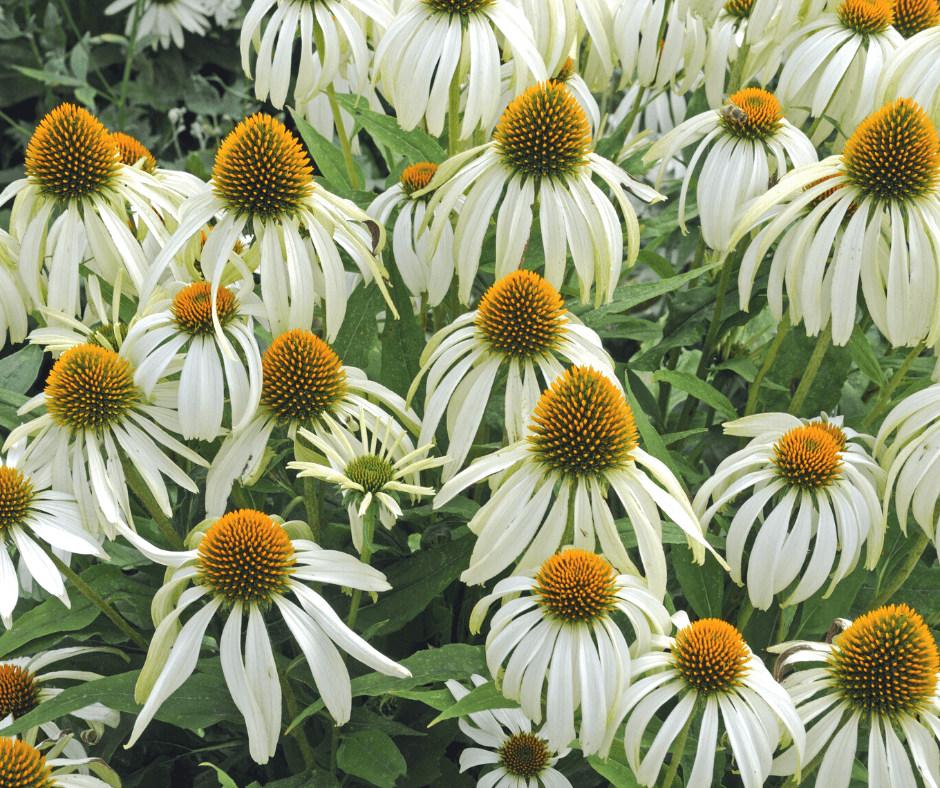
Quite a few other U.S. native perennials sometimes dress in white, even if it’s not their typical flower color. Purple coneflower (Echinacea purpurea) sometimes goes albino, as in cultivars ‘White Swan’ and the dwarf, 20-inch-tall ‘PowWow White’. Their large-coned, many-rayed blossoms debut in early summer and continue for many weeks. False dragonhead (Physostegia virginiana) is another purple all-summer bloomer that often diverges into white forms. Cultivars such as ‘Alba’ and ‘Summer Snow’ have the same general habit as purple forms, bearing their flower spikes on 3-foot tall, rapidly spreading plants. Less rampant forms include ‘Miss Manners’, a 2-foot-tall clump-former, and the 15-inch ‘Crystal Peak White’. Purple-to-white also happens in the genus Phlox. Most border phlox (Phlox paniculata) come into bloom after the Fourth. Several other species and hybrids, however, start flowering in June and continue through summer. Look for ‘Solar Flare’, ‘Daughter of Pearl’, and ‘Aurora’, all bearing white, pink-eyed flowers on 2- to 3-foot, mildew resistant plants in spring and early summer with repeat flushes until frost.
Blue Garden Flowers
Anise hyssop (Agastache foeniculum)
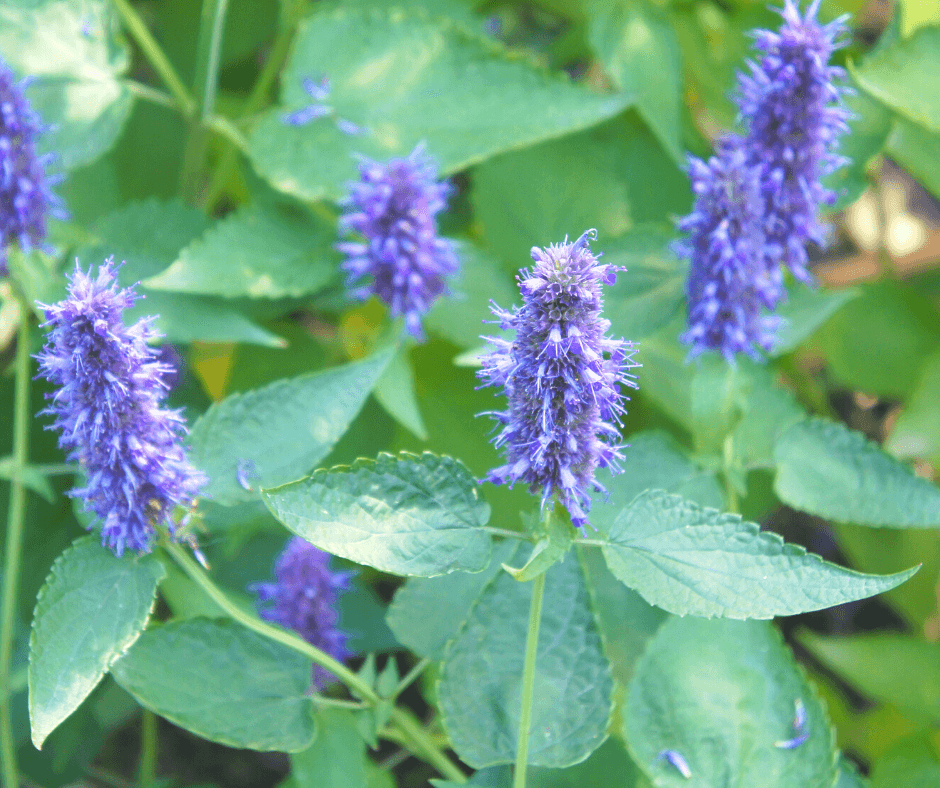
If you love masses of lavender-blue flowers and bumblebees, you’ll want to work this eastern North American native into your plantings, patriotic and otherwise. The flowers are carried from late spring through much of summer on airy spikes undergirded by clumps of coarse toothed oval leaves. All parts of this large, 3- to 4-foot tall, short-lived perennial waft a pleasant fragrance. A reliable (and sometimes prolific) self-sower, it comes in several forms, including white-flowered and gold-leaved varieties. Dalliances with other species including the East Asian native Agastache rugosa have led to numerous hybrid selections (e.g., ‘Blue Fortune’), most of which offer a somewhat more compact habit.
Tall larkspur (Delphinium exaltatum)
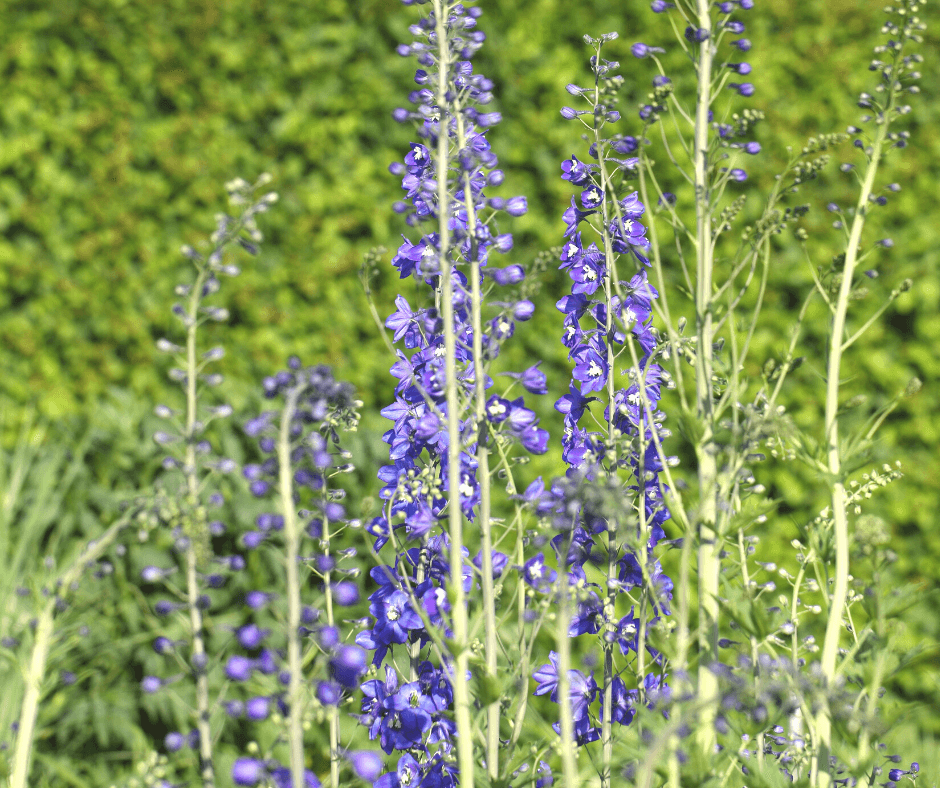
Common garden delphiniums are European hybrids of Eurasian species that melt in the heat and humidity of eastern North American summers. Tall larkspur, in contrast, hails from the Southeast United States, so it can take just about anything summer throws at it. Don’t expect flowers the size of those of the prima-donna hybrids. Count instead on spikes of purple-blue blooms that are much daintier and less flop-prone, on 4- to 5-foot stalks. They’re right at home in cottage borders, butterfly borders, and other informal settings. Flowering kicks in around the Fourth, yet another reason to celebrate the holiday.
